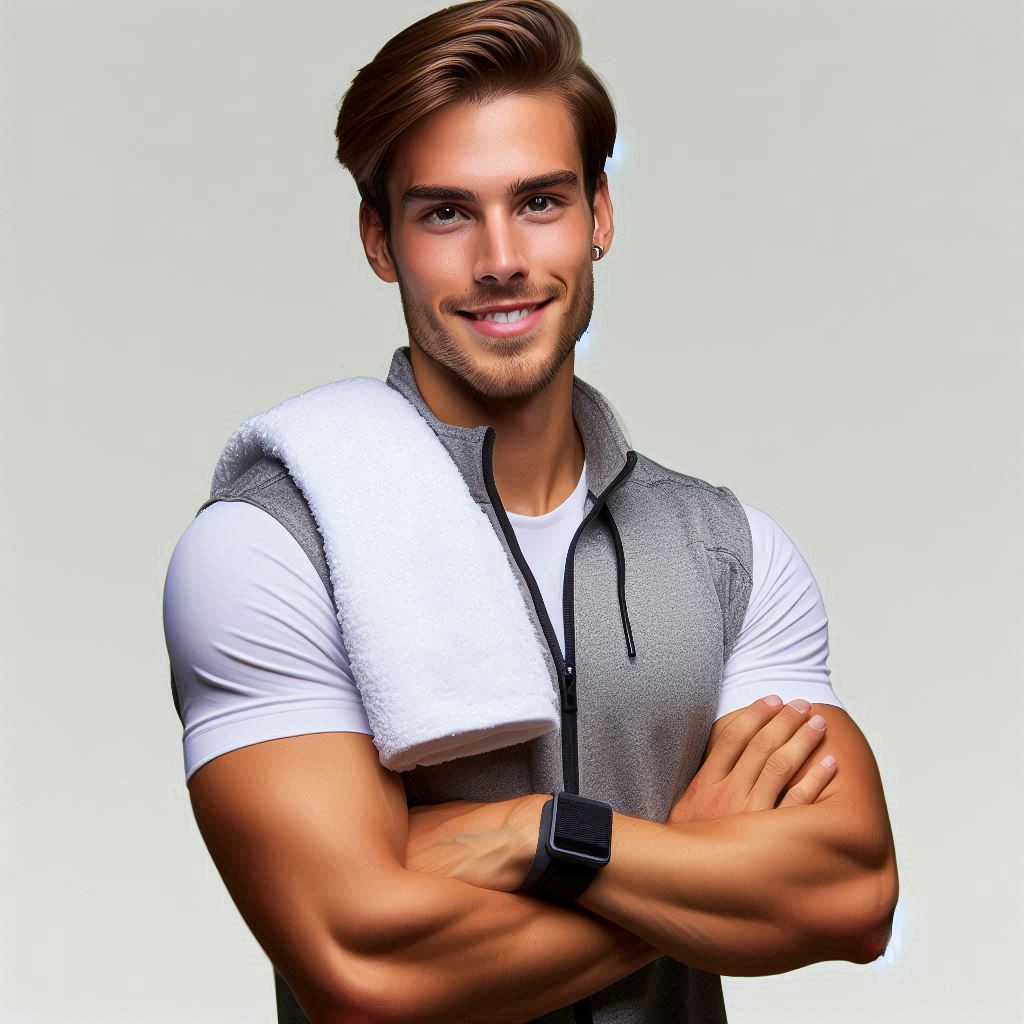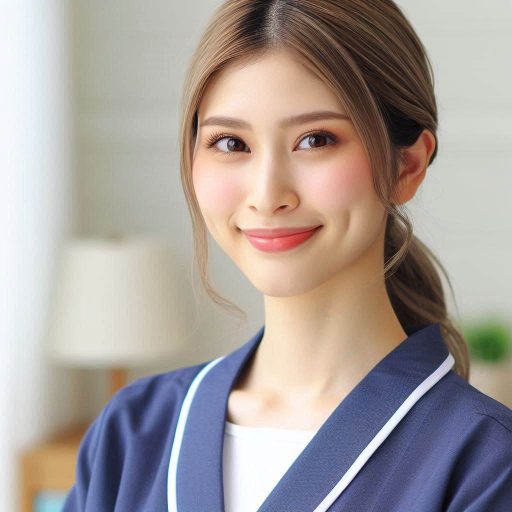Introduction
The dress code for fitness instructors plays a vital role in their professional image.
Wearing appropriate attire enhances credibility, making clients feel confident in their expertise.
Fitness instructors must prioritize comfort, functionality, and professionalism in their clothing choices.
Attire should allow for full range of motion, ensuring instructors can demonstrate exercises effectively.
Proper clothing not only supports performance but also communicates dedication to the job.
The right dress code boosts client trust and reinforces a positive gym environment.
First impressions matter, and well-dressed fitness professionals set the tone for a professional atmosphere.
Proper attire also aligns with the gym’s brand, enhancing the overall image of the facility.
Instructors should avoid overly casual or inappropriate clothing that detracts from their authority.
Fitness is a results-driven industry, and professionalism influences client retention.
Clothing that aligns with safety and cleanliness standards further contributes to a well-run fitness class.
Adhering to a dress code helps instructors project competence, which can attract and retain clients.
In essence, the dress code for fitness instructors significantly impacts their professionalism and credibility.
Proper attire promotes a positive, trustworthy environment while supporting functionality and performance.
Dress Code Guidelines for Women
Appropriate Tops
- Tanks or fitted t-shirts are ideal for women fitness instructors.
- Choose tops that are breathable and allow for easy movement.
Suitable Bottoms
- Opt for leggings or shorts that are flexible and comfortable.
- Make sure the bottoms are not too tight or restrictive.
Proper Footwear
- Wearing sneakers is crucial for support and stability.
- Invest in high-quality athletic shoes to prevent injuries.
Overall, the key is to prioritize comfort, functionality, and professionalism when selecting your fitness instructor attire.
Read: Fitness Instructor Interview Tips: How to Stand Out
Dress Code Guidelines for Men
When it comes to dressing as a fitness instructor, men should prioritize comfort, functionality, and professionalism.
Here are some key guidelines to keep in mind:
Recommended Tops
- Athletic Shirts: Opt for moisture-wicking shirts that allow for breathability during workouts.
- Tanks: Tank tops are great for showcasing arm movements and providing freedom of movement.
- Compression Shirts: These can help support muscles and improve circulation during intense workouts.
Appropriate Bottoms
- Athletic Shorts: Look for shorts with built-in liners for added support and comfort.
- Sweatpants: Choose sweatpants that are flexible and allow for a full range of motion.
- Leggings: Compression leggings can be a versatile option for various types of workouts.
Importance of Supportive Athletic Shoes
Footwear is a crucial aspect of a fitness instructor’s attire as it directly impacts performance and safety.
Here’s why wearing supportive athletic shoes is essential:
Transform Your Career Today
Unlock a personalized career strategy that drives real results. Get tailored advice and a roadmap designed just for you.
Start Now- Prevents Injuries: High-impact activities require proper footwear to reduce the risk of injuries.
- Enhances Stability: Supportive shoes offer stability and balance during dynamic movements.
- Cushioning: Impact absorption is crucial for protecting joints and preventing discomfort.
- Supports Arch: Shoes with adequate arch support can prevent foot fatigue and pain.
- Improves Performance: Quality athletic shoes can enhance overall performance in various workout routines.
By following these dress code guidelines for men, fitness instructors can ensure they are both comfortable and professional while leading classes and engaging with clients.
Read: How to Start a Career as a Home Health Aide
Importance of Comfort and Functionality
When it comes to being a fitness instructor, what you wear matters.
Not only does it affect how you present yourself to your clients, but it also impacts your overall performance during workouts.
One key aspect that should not be overlooked is the importance of comfort and functionality in your attire.
Significance of wearing comfortable attire for mobility during workouts
First and foremost, wearing comfortable clothing is essential for mobility during workouts.
As a fitness instructor, you’re constantly on the move, demonstrating exercises, and guiding your clients through their routines.
Having the freedom to move easily and comfortably is critical for engaging effectively with your clients and showcasing proper form.
Role of functional clothing in allowing instructors to demonstrate exercises effectively
Additionally, functional clothing is key to your success as an instructor.
Functional apparel is designed with specific features that enhance your performance and allow you to demonstrate exercises with ease.
Whether it’s strategically placed seams for better movement or moisture-wicking material to keep you dry, functional clothing can make a significant difference in how you perform during classes.
Impact of breathable fabrics on staying cool and dry during classes
Another aspect to consider is the impact of breathable fabrics on your overall comfort.
When you’re leading a workout class, staying cool and dry is essential for maintaining your energy levels and focus.
Breathable fabrics help wick away sweat and allow air to circulate, preventing overheating and discomfort.
This not only benefits you but also creates a more pleasant experience for your clients.
Overall, prioritizing comfort and functionality in your fitness instructor dress code is essential for success.
By wearing comfortable, functional, and breathable attire, you can improve your performance, engage effectively with your clients, and create a positive workout environment for everyone involved.
Read: Fitness Instructor Burnout: Prevention and Recovery

Accessories and Additional Attire
In addition to your fitness instructor attire, accessories and additional attire play a crucial role in enhancing your comfort and performance during classes.
Showcase Your Business Today
Reach thousands of readers actively exploring professional services. Publish your business profile and grow your audience now.
Publish NowLet’s dive into the importance of these items:
Headbands or Wristbands
Headbands or wristbands are not just fashion accessories; they serve a practical purpose during your workouts.
Sweating profusely can be distracting, and having sweat constantly running into your eyes can impede your focus and performance.
Wearing a headband or wristband can help keep the sweat at bay, allowing you to concentrate on leading the class effectively.
Choose absorbent materials that are comfortable against your skin and easy to wash and reuse.
Fitness Tracker or Smartwatch
In today’s tech-savvy world, fitness trackers and smartwatches have become popular among fitness enthusiasts and instructors alike.
These devices can track your heart rate, steps taken, calories burned, and even monitor your sleep patterns.
Having a fitness tracker or smartwatch can provide valuable insights into your own fitness journey, helping you set goals and track your progress over time.
It can also serve as a motivational tool to push yourself further in each workout session.
Towel
One essential accessory that should never be overlooked is a towel.
Sweating is a natural part of any workout, and it’s important to have a towel on hand to wipe away perspiration and stay dry throughout your classes.
Carrying a towel not only helps you maintain your hygiene but also prevents sweat from dripping onto equipment or mats, keeping them clean for yourself and your participants.
Choose a highly absorbent and quick-drying towel that is easy to carry and machine washable for convenience.
Accessories like headbands or wristbands, fitness trackers or smartwatches, and towels may seem like small additions to your fitness instructor dress code, but they can significantly impact your performance and overall experience during classes.
Investing in the right accessories can help you stay comfortable, focused, and motivated to lead your participants effectively.
Remember, it’s the small details that can make a big difference in how you look and feel while teaching your fitness classes.
Read: The Role of Family in Supporting Home Health Aides
Considerations for Different Fitness Environments
The dress code variations for teaching in a gym setting versus outdoor classes
Fitness instructors should adjust their attire depending on the environment they teach in.
Gym settings typically require fitted, breathable clothing that allows free movement.
This could include leggings, tank tops, or moisture-wicking shirts.
These items help instructors stay comfortable and professional indoors, especially when teaching high-intensity classes.
Importance of adjusting attire based on the type of workout being conducted
For outdoor classes, instructors need to consider weather conditions.
Layering is essential, especially in cooler climates.
Waterproof jackets or windbreakers can provide warmth and protection.
Additionally, hats or sunglasses may be necessary for sunny environments.
Choosing adaptable clothing for outdoor conditions ensures comfort and effectiveness.
The type of workout also plays a significant role in attire.
For example, yoga instructors often wear flexible, soft fabrics that allow easy stretching.
This encourages fluid movements and provides comfort during static poses.
In contrast, instructors teaching high-intensity interval training (HIIT) need supportive, durable gear.
Compression shorts or tight-fitting leggings minimize friction and allow fast movements without restriction.
The need to dress appropriately for different fitness disciplines like yoga or HIIT
Dressing appropriately for different fitness disciplines is critical to both comfort and performance.
Yoga, pilates, and barre classes benefit from lighter, stretchy fabrics.
Strength training or cardio workouts may require more robust, sweat-resistant clothing.
Instructors should always consider the workout demands when selecting their attire.
In addition to comfort, safety is a priority. Wearing appropriate footwear is key to preventing injuries.
Running shoes provide support for cardio, while barefoot or grippy socks work well for yoga or pilates.
Adapting your attire to your teaching environment and discipline ensures a professional image and enhances your performance.
Professionalism and Image
Role of dress code in maintaining a professional image as a fitness instructor
As a fitness instructor, your appearance plays a crucial role in how clients perceive you.
Your dress code is not just about looking good; it’s about maintaining a professional image that instills confidence and trust in your clients.
Showcase Your Business Today
Reach thousands of readers actively exploring professional services. Publish your business profile and grow your audience now.
Publish NowWhen you dress professionally, it shows that you take your role seriously and that you are committed to helping your clients achieve their fitness goals.
It also communicates to clients that you are knowledgeable, competent, and capable of guiding them through their workouts effectively.
Impact of attire on client perceptions and trust in instructors
Clients are more likely to trust and respect instructors who present themselves professionally.
By dressing in appropriate workout attire, you demonstrate that you are prepared to lead workouts, provide instruction, and offer guidance in a safe and effective manner.
Importance of dressing in a way that reflects the values and brand of the fitness facility
Moreover, your attire should align with the values and brand of the fitness facility where you work.
If the facility has a specific dress code or uniform requirement, make sure to adhere to it.
This not only shows respect for the facility’s guidelines but also helps maintain consistency and professionalism among all staff members.
Ultimately, your dress code as a fitness instructor is a reflection of your professionalism, expertise, and dedication to your clients.
By dressing in a way that conveys these qualities, you not only enhance your own image but also contribute to a positive and supportive environment for your clients.
Discover More: Housekeeper vs. Room Attendant: Key Differences
Personal Style and Individuality
When it comes to being a fitness instructor, it’s essential to not only perform well but also to look the part.
While there may be certain dress codes in place, it’s still possible to inject your own personal style into your workout wardrobe.
Here are some tips on how to do so:
Importance of expressing personal style while adhering to dress code guidelines
While it’s crucial to follow any specific rules or regulations set by your gym or fitness facility, don’t be afraid to show off your personal style within those boundaries.
Whether it’s through your choice of colors, patterns, or even the fit of your clothing, there are many ways to express yourself while staying within the guidelines.
Ways to incorporate individuality through color choices or patterns in fitness attire
One simple way to add a pop of personality to your workout look is through your color choices.
Opt for bright, bold hues that reflect your energy and enthusiasm as an instructor.
Alternatively, experiment with fun patterns like stripes, florals, or geometric designs to make a unique statement.
Balance between personal style and professionalism in instructor dress
While it’s important to showcase your personal style, remember that you are also representing your fitness program and facility.
Aim for a balance between expressing yourself and maintaining a professional image.
Consider investing in high-quality workout gear that fits well, looks polished, and allows you to move comfortably during classes.
Overall, don’t be afraid to let your personal style shine through in your fitness instructor wardrobe.
By finding that perfect balance between individuality and professionalism, you can create a look that is both unique to you and fitting for your role as a fitness leader.
Gain More Insights: How Chauffeurs Can Improve Their Driving Skills
Conclusion
It is crucial for fitness instructors to adhere to a dress code for maintaining professionalism and credibility.
Attire plays a significant role in facilitating effective instruction and building rapport with clients.
Fitness instructors should prioritize comfort, functionality, and professionalism when selecting their attire.
[E-Books for Sale]
The Big Book of 500 High-Paying Jobs in America: Unlock Your Earning Potential
$19.99 • 500 High-Paying Jobs • 330 pages
Explore 500 high-paying jobs in America and learn how to boost your career, earn more, and achieve success!
See All 500 High-Paying Jobs of this E-Book
1001 Professions Without a Degree: High-Paying American Jobs You Can Start Now
$19.99 • 1001 Professions Without a Degree • 174 pages
Discover 1001 high-paying jobs without a degree! Unlock career tips, skills, and success strategies for just $19.99!




